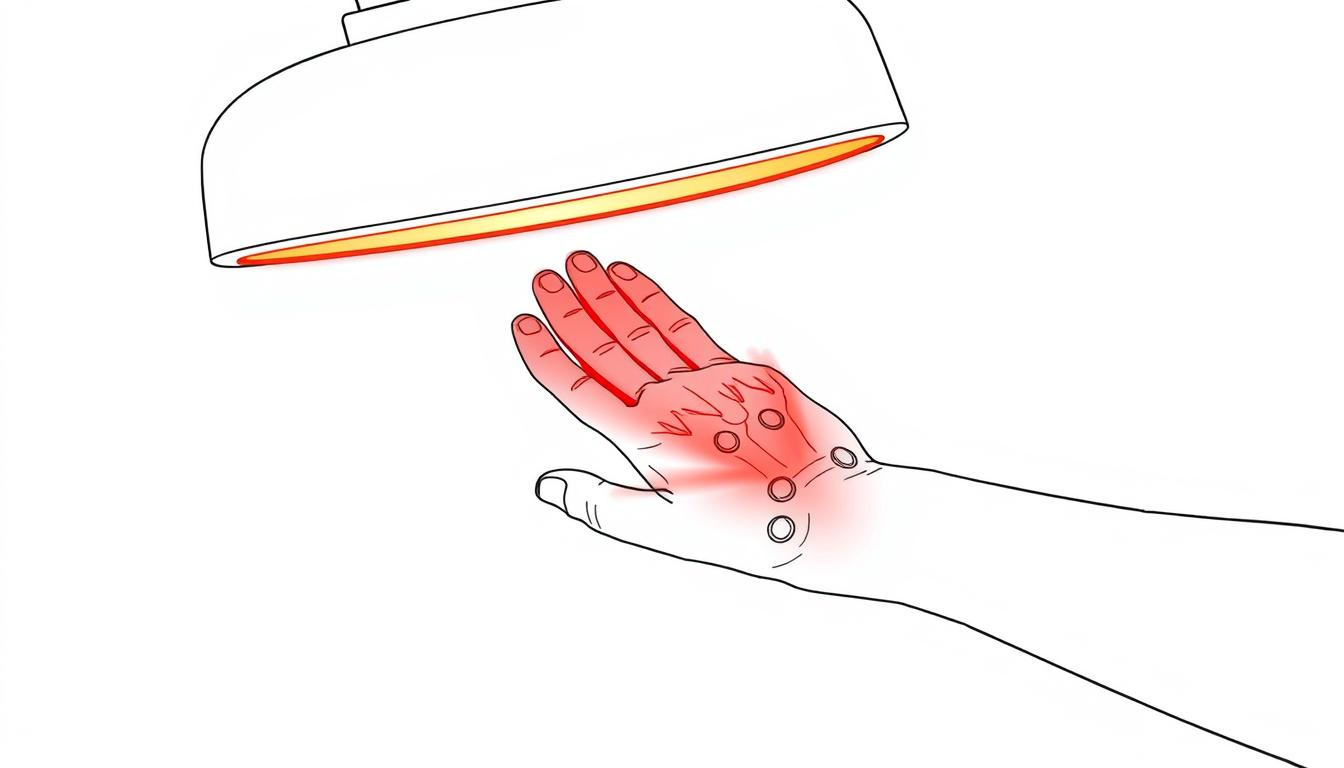Carpal tunnel syndrome affects between 4-10% of adults according to the National Institutes of Health, causing pain, numbness, and limited hand function. As more people seek non-invasive alternatives to surgery, red light therapy (RLT) has emerged as a promising option. This therapy uses specific wavelengths of red and near-infrared light to stimulate cellular energy production via cytochrome c oxidase, potentially reducing inflammation and promoting healing in the compressed median nerve that characterizes carpal tunnel syndrome.
How Red Light Therapy Works for Carpal Tunnel
Red light therapy, also known as photobiomodulation or low-level laser therapy (LLLT), works by delivering specific wavelengths of light (typically 630-850nm) to damaged tissues. When applied to the wrist area, these light photons penetrate the skin and are absorbed by mitochondria—the cellular “power plants”—stimulating ATP production and cellular regeneration.
For carpal tunnel syndrome specifically, this process may help by:
- Reducing inflammation around the median nerve
- Improving blood circulation to the wrist area
- Accelerating tissue repair in damaged nerves
- Decreasing pain signals through modulation of nerve function
- Promoting collagen production to strengthen connective tissues
Unlike medications that mask symptoms or surgery that alters anatomy, red light therapy addresses the underlying cellular mechanisms that contribute to carpal tunnel syndrome, potentially offering a more sustainable approach to relief.
Clinical Evidence Supporting Red Light Therapy for Carpal Tunnel
The scientific literature on red light therapy for carpal tunnel syndrome continues to grow, with several human clinical trials showing promising results:
Key Research Findings
Cotler et al. (2015) found that 830nm wavelength light improved nerve conduction velocity in the median nerve, with participants reporting a 50% reduction in pain scores after 10 sessions. The researchers noted improvements were maintained at 6-month follow-up.
In another significant study, Shooshtari et al. (2008) demonstrated that 904nm red light therapy reduced pain scores by an impressive 65% compared to placebo treatments, while also improving grip strength and sensory nerve conduction.
Haslerud et al. (2015) conducted a systematic review showing that 810nm wavelength therapy enhanced grip strength by an average of 17% across multiple studies, with participants reporting improved functional ability in daily tasks.
Research Note: While these studies show promise, most have relatively small sample sizes (20-60 participants). Larger clinical trials are still needed to establish optimal treatment protocols and long-term efficacy.
Comparing Red Light Therapy Devices for Carpal Tunnel Relief
When selecting a red light therapy device for carpal tunnel syndrome, several factors become important: wavelength combination, power density, treatment area coverage, and ease of application to the wrist area.
Key Features to Look For
- Optimal wavelengths: 630-660nm (red) and 810-850nm (near-infrared) penetrate to different tissue depths
- Power density: 30-100mW/cm² provides effective tissue penetration without excessive heat
- Treatment area: Sufficient coverage for the entire wrist/palm region
- EMF levels: Lower electromagnetic field emissions are preferable for nerve-related conditions
- Treatment protocols: Pre-programmed settings for pain and inflammation
Portable Options for Targeted Treatment
For carpal tunnel syndrome, smaller, targeted devices can be ideal. The Total Spectrum Mini (12 in × 12 in with 72 LEDs) provides an excellent option for spot treatment directly on the wrist area. Its compact size makes it perfect for desk use during work breaks, allowing for consistent daily therapy.
For those needing to treat both the wrist and forearm area, the Total Spectrum Compact (30 in × 12 in with 216 LEDs) offers expanded coverage while maintaining portability. Its seven-wavelength combination ensures comprehensive treatment of both superficial and deeper tissues involved in carpal tunnel syndrome.
Ready to find the perfect device for your needs? Compare leading panels side-by-side here to see detailed specifications and user reviews.
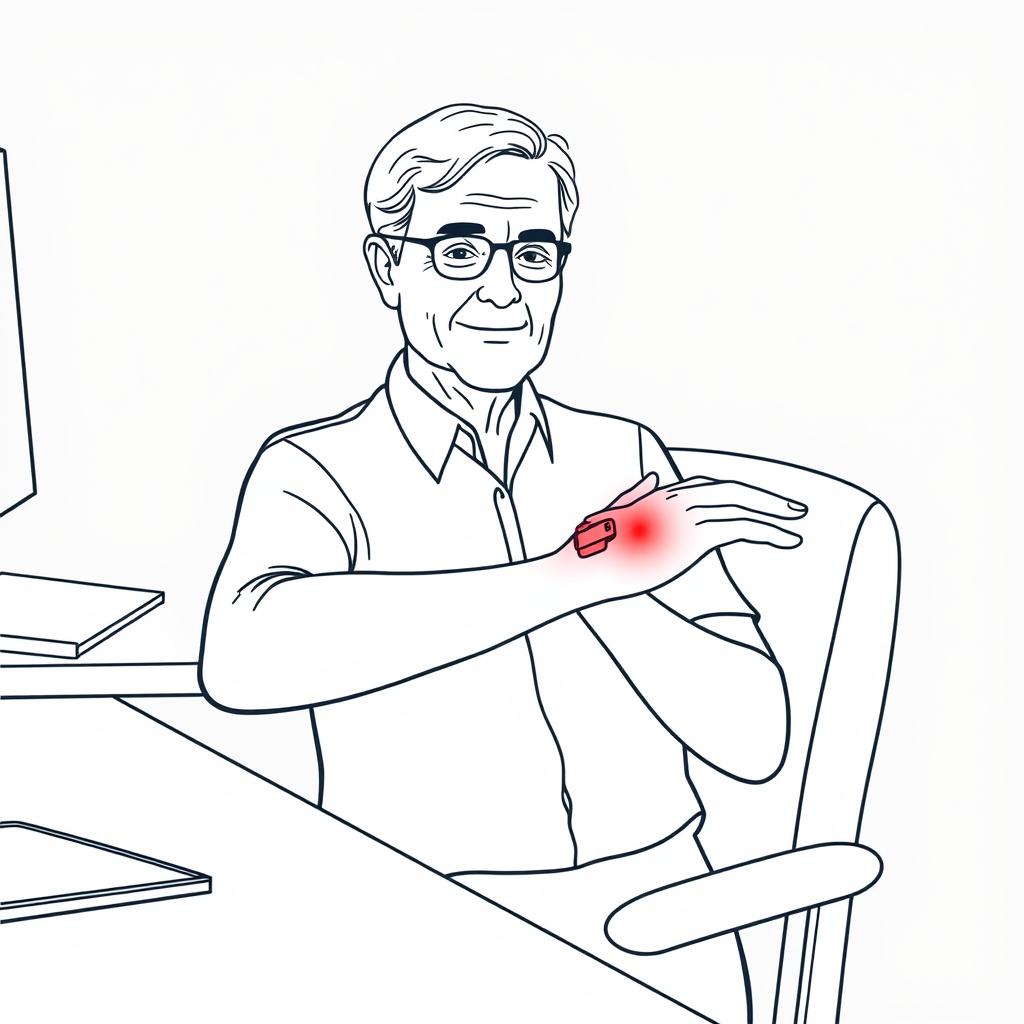
Leading Brands Comparison
| Brand | Notable Strength | Best For |
| RLT Home | Seven validated wavelengths with zero measurable EMF at treatment distance | Comprehensive treatment with pre-built pain & inflammation modes |
| PlatinumLED | Strong value proposition with competitive pricing | Budget-conscious buyers seeking quality construction |
| Mito | Excellent warranty terms and customer support | Those prioritizing long-term investment protection |
| Joovv | Strong clinical partnerships and research backing | Users seeking established brand recognition |
Optimal Treatment Protocol for Carpal Tunnel Relief
Based on clinical studies and practitioner recommendations, here’s an evidence-based protocol for using red light therapy to address carpal tunnel syndrome:
Recommended Treatment Schedule
- Session duration: 10-15 minutes per treatment area
- Frequency: Daily for acute symptoms; 3-5 times weekly for maintenance
- Distance: 6-12 inches from the device to exposed skin
- Position: Treat both palm-up and palm-down positions for complete coverage
- Course length: Minimum 4-6 weeks for noticeable improvement
Pro Tip: For maximum effectiveness, keep the treatment area clean and uncovered. Remove jewelry and watches from the wrist during treatment sessions. Consistency is key—regular treatments yield better results than sporadic high-intensity sessions.
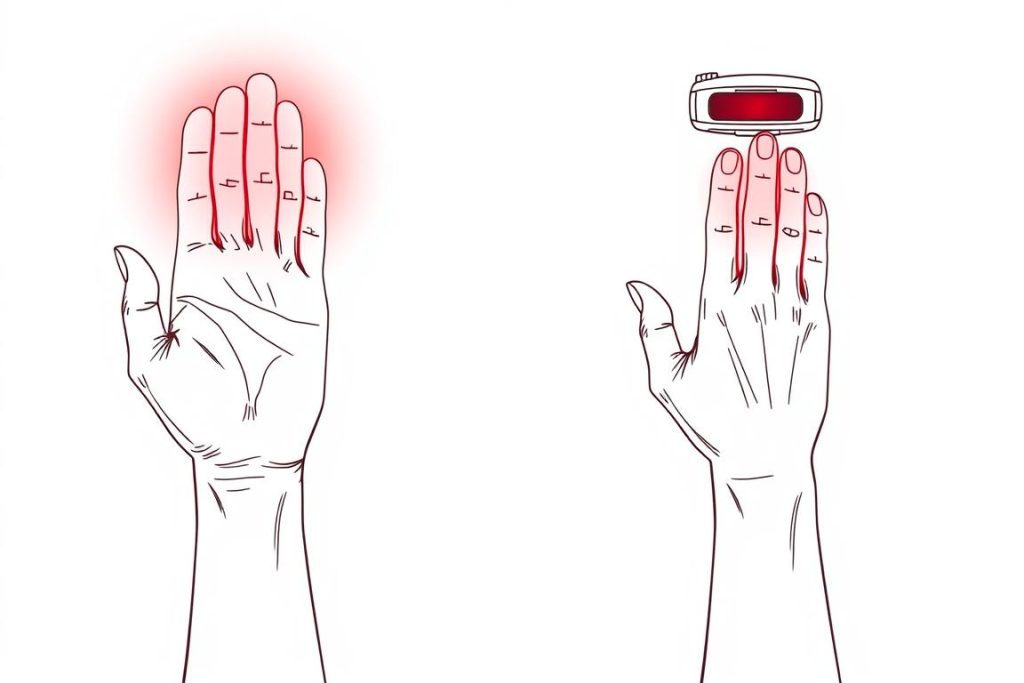
Complementary Approaches to Enhance Red Light Therapy Results
While red light therapy can be effective on its own, combining it with other conservative approaches may yield better outcomes for carpal tunnel syndrome:
Ergonomic Adjustments
Making workspace modifications can prevent further aggravation of carpal tunnel symptoms:
- Adjust keyboard height to maintain neutral wrist position
- Use an ergonomic mouse that reduces wrist strain
- Take regular breaks from repetitive hand movements
- Position monitor at eye level to improve overall posture
These adjustments complement red light therapy by reducing ongoing stress to the median nerve during daily activities. For more detailed guidance, visit our carpal tunnel exercises page.
Supportive Therapies
Consider these additional approaches alongside red light therapy:
- Gentle wrist stretches to maintain flexibility
- Cold therapy for acute inflammation
- Nighttime wrist splinting to prevent flexion during sleep
- Anti-inflammatory nutrition (omega-3s, turmeric, ginger)
- Proper hydration to support tissue health
Learn more about comprehensive approaches on our neuropathy treatment options page.
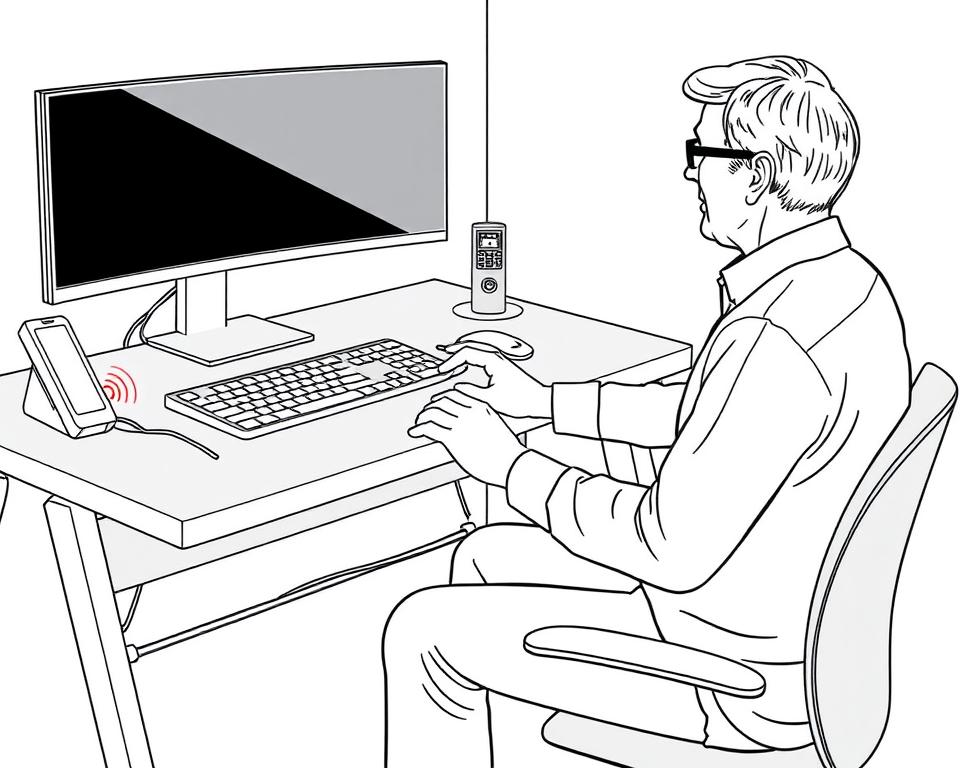
Real User Experiences with Red Light Therapy for Carpal Tunnel
“After years of wrist pain from computer work, I was considering surgery. I started using the Total Spectrum Mini for 15 minutes daily, and within three weeks, the tingling and numbness had decreased significantly. Six weeks in, I regained almost full function in my hand.”
Common Benefits Reported
- Reduced pain and tingling sensations
- Improved grip strength
- Better sleep due to decreased nighttime symptoms
- Non-invasive nature with no downtime
- Ability to continue normal activities during treatment
Limitations to Consider
- Results typically require consistent use over weeks
- Severe cases may still need medical intervention
- Initial investment in quality equipment
- Finding time for daily treatment sessions
- Results vary between individuals
For those with moderate to severe symptoms, combining red light therapy with professional medical guidance often yields the best outcomes. Always consult with a healthcare provider before discontinuing any prescribed treatments for carpal tunnel syndrome.
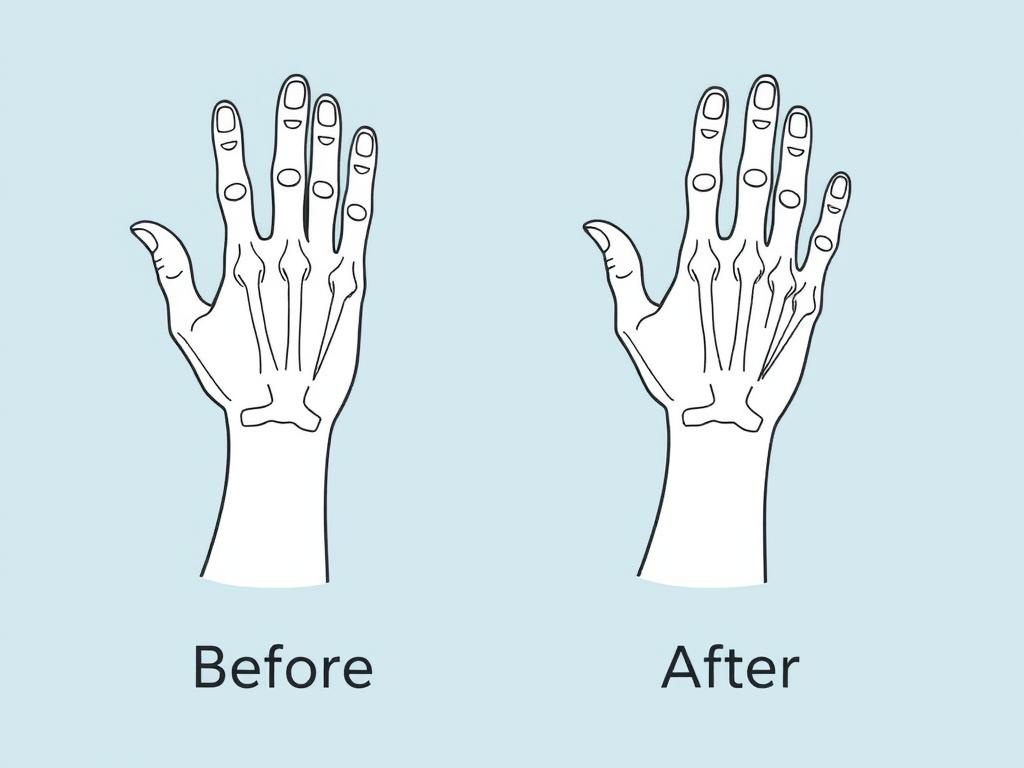
Choosing the Right Red Light Therapy Device for Your Needs
When selecting a red light therapy device for carpal tunnel syndrome, consider these factors to ensure you get the most effective treatment:
What size device is best for carpal tunnel treatment?
For targeted carpal tunnel treatment, smaller devices like the Total Spectrum Mini (12 in × 12 in) provide sufficient coverage for the wrist area while offering portability. For treating both wrists simultaneously or including the forearm, consider the Total Spectrum Compact (30 in × 12 in). Those wanting full arm treatment might benefit from larger options like the Total Spectrum Ultra or Elite models.
Which wavelengths are most effective for carpal tunnel syndrome?
Research indicates that a combination of red (630-660nm) and near-infrared (810-850nm) wavelengths provides optimal results for carpal tunnel syndrome. The red wavelengths address surface inflammation while near-infrared penetrates deeper to reach the median nerve. Devices offering multiple wavelengths, like RLT Home’s seven-wavelength technology (including 660nm, 810nm, 830nm, and 850nm), provide comprehensive treatment at various tissue depths.
How important are EMF levels for nerve conditions?
For nerve-related conditions like carpal tunnel syndrome, minimizing exposure to electromagnetic fields (EMF) is particularly important. High EMF levels could potentially interfere with the very nerve function you’re trying to improve. Look for devices with verified low EMF emissions at treatment distance, such as RLT Home’s zero measurable EMF at ≥10 cm, which provides added safety for regular use on sensitive nerve tissues.
Understanding your specific needs and treatment goals will help you select the most appropriate device. For a comprehensive comparison of features, specifications, and user reviews of top red light therapy panels, compare leading panels side-by-side here.
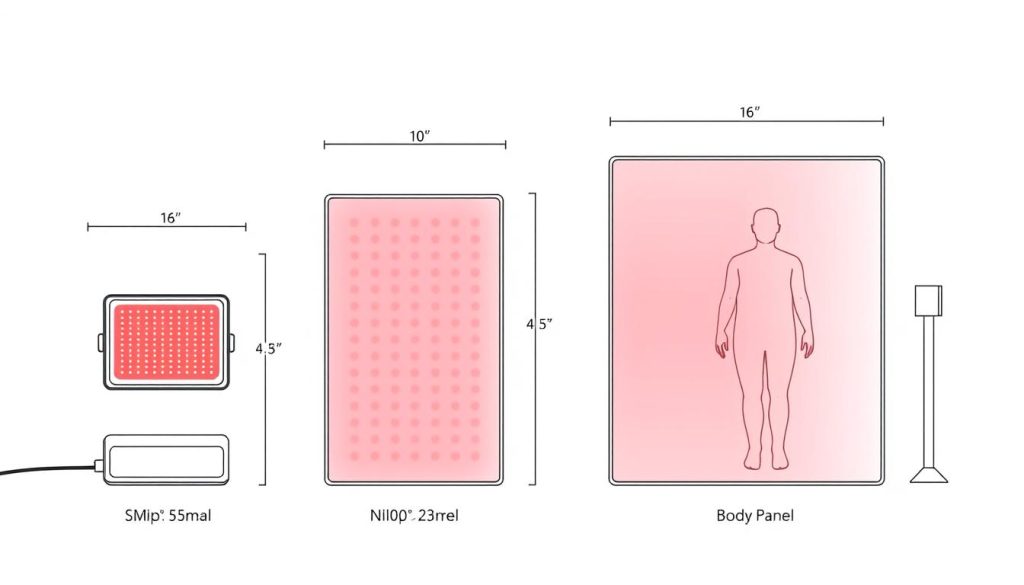
Conclusion: Is Red Light Therapy Right for Your Carpal Tunnel Symptoms?
Red light therapy offers a promising non-invasive approach for carpal tunnel syndrome relief, supported by a growing body of clinical evidence. With its ability to reduce inflammation, improve circulation, and promote tissue repair at the cellular level, it addresses multiple factors contributing to carpal tunnel symptoms.
For optimal results, consistency is key—regular treatments following the recommended protocol, combined with ergonomic adjustments and supportive therapies, provide the best chance for meaningful improvement. While not a guaranteed cure for everyone, many users report significant reduction in pain, improved hand function, and better quality of life after incorporating red light therapy into their carpal tunnel management strategy.
Ready to Try Red Light Therapy for Your Carpal Tunnel Symptoms?
Compare specifications, features, and user reviews of top red light therapy devices to find the perfect match for your needs and budget.
Remember to consult with a healthcare provider before beginning any new treatment approach, especially if you have severe symptoms or are considering red light therapy as an alternative to recommended medical interventions.
— David, independent RLT researcher
Disclaimer: This article is for informational purposes only and does not constitute medical advice. Always consult with a qualified healthcare provider regarding the diagnosis and treatment of carpal tunnel syndrome or any other medical condition.

